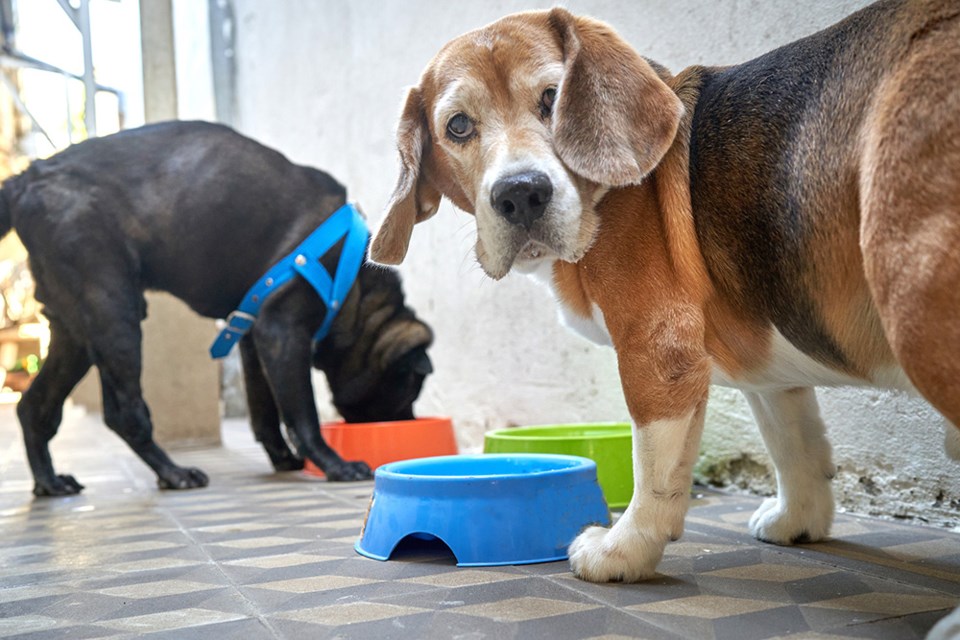Dogs evolved as hunters and scavengers. Guarding food and valuable resources against other animals is a natural behaviour. However, it’s not something we can live with.
Fortunately, we can prevent it in puppies and, if you have a dog that resource guards, we can change it.
Dogs may guard food/the food bowl, as well as toys or items, their owners, sleeping locations and other things or places. In fact, a dog can potentially guard anything from a bobby pin to a hole in the ground.
Early signs include eating faster as you approach or running away to “parade” with a toy. As the problem worsens, more troubling signs include sudden stiffening and freezing, a hard stare, growling, snapping and biting.
Successfully changing resource guarding requires a multifaceted approach. First, ensure safety and prevent rehearsal of the behaviour through management.
For example, if you need to retrieve an item in your dog’s possession, throw a treat away from the item and pick it up once your dog has moved away to get the treat.
Dogs guard because they are worried they will lose a resource they value. The worst thing you can do is confront the dog and try to compete for the resource. Confrontation will only increase the guarding and its intensity.
Secondly, change the dog’s emotional response to the approach of a human to their resource. Sticking your hand in your puppy’s or dog’s food bowl so they know you can take their food at any time is common advice. Unfortunately, following that advice is likely to create a dog that resource guards or make an existing problem worse.
Don’t teach your dog to worry about your approach because you might take their food. Do the opposite. Teach your dog that the approach of a human to their food, toys, space or any valuable resource is a good thing and results in something wonderful for the dog.
Third, always work at a level your dog can accept. If your dog growls when you get within five feet of a toy or food bowl, then stay more than five feet away. Use management to prevent accidentally triggering the behaviour by removing toys from the living area and feeding in a closed-off room.
Finally, teach your dog to cooperate for things. Dogs are less likely to guard when they understand that the good things in life come to them through cooperation, not competition, with you.
Cooperation includes being responsive to cues, such as “give” or “trade”, “bring” and “drop”, “leave it” or “move away”, et cetera.
Resource guarding can be upsetting and scary but the behaviour can be changed and your dog can learn to share with you instead of guard from you. The behaviour modification will need to be maintained throughout your dog’s life to ensure the guarding behaviour does not resurface.
Work with a qualified professional trainer who uses positive reinforcement and can guide you and your dog through the steps you need to take.
Sandy Middleton is a dog trainer and behaviour consultant based in the qathet region. For more information, go to bestfriendsdogtraining.ca.
Join the Peak's email list for the top headline right in your inbox Monday to Friday: prpeak.com/account/mailinglist.



